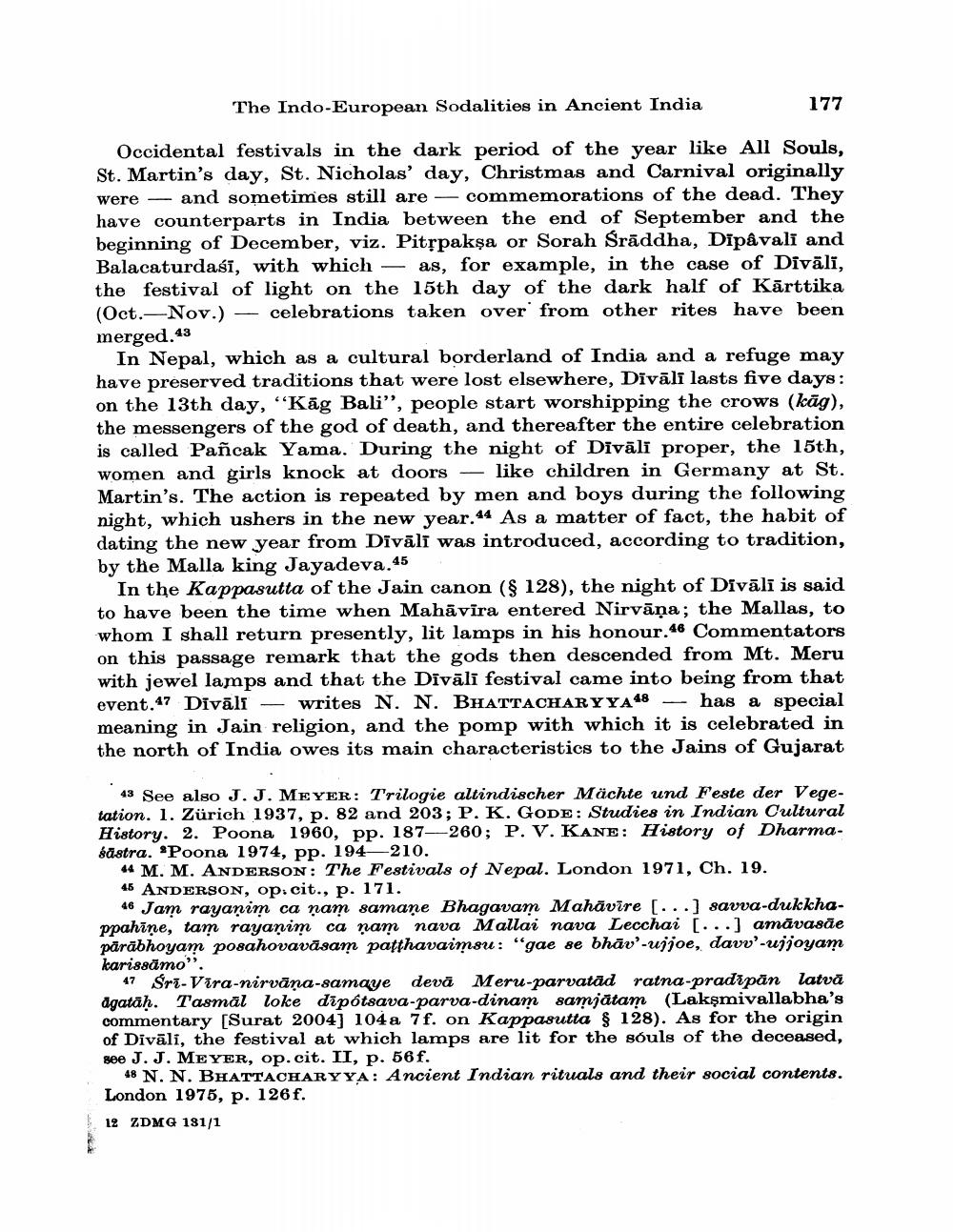Book Title: Indo European Sodalities In Ancient India Author(s): W B Bollee Publisher: W B Bollee View full book textPage 6
________________ The Indo-European Sodalities in Ancient India 177 Occidental festivals in the dark period of the year like All Souls, St. Martin's day, St. Nicholas' day, Christmas and Carnival originally were — and sometimes still are — commemorations of the dead. They have counterparts in India between the end of September and the beginning of December, viz. Pitặpakşa or Sorah Srāddha, Dipávali and Balacaturdaśī, with which — as, for example, in the case of Divāli, the festival of light on the 15th day of the dark half of Kārttika (Oct.-Nov.) — celebrations taken over' from other rites have been merged. 43 In Nepal, which as a cultural borderland of India and a refuge may have preserved traditions that were lost elsewhere, Divālī lasts five days: on the 13th day, “Kāg Bali”, people start worshipping the crows (kāg), the messengers of the god of death, and thereafter the entire celebration is called Pañcak Yama. During the night of Divāli proper, the 15th, women and girls knock at doors - like children in Germany at St. Martin's. The action is repeated by men and boys during the following night, which ushers in the new year.44 As a matter of fact, the habit of dating the new year from Divālī was introduced, according to tradition, by the Malla king Jayadeva.45 In the Kappasutta of the Jain canon (§ 128), the night of Divālī is said to have been the time when Mahāvira entered Nirvāņa; the Mallas, to whom I shall return presently, lit lamps in his honour. 46 Commentators on this passage remark that the gods then descended from Mt. Meru with jewel lamps and that the Divāli festival came into being from that event.47 Divāli — writes N. N. BHATTACHARYYA 48 — has a special meaning in Jain religion, and the pomp with which it is celebrated in the north of India owes its main characteristics to the Jains of Gujarat 43 See also J. J. MEYER: Trilogie altindischer Mächte und Feste der Vegetation. 1. Zürich 1937, p. 82 and 203; P. K. GODE: Studies in Indian Cultural History. 2. Poona 1960, pp. 187--260; P. V. KANE: History of Dharmaśāstra. Poona 1974, pp. 194—210. 14 M. M. ANDERSON: The Festivals of Nepal. London 1971, Ch. 19. 45 ANDERSON, op. cit., p. 171. 46 Jam rayanim ca nam samane Bhagavam Mahavire [...] savva-dukkhappahine, tam rayanim ca nam nava Mallai nava Lecchai [...] amāvasäe pārābhoyam posahovavāsam patthavaimsu: "gae se bhāv'-ujjoe, davv'-ujjoyam karissümo". 47 Sri-Vira-nirvāna-samaye devā Meru-parvatad ratna-pradipän latvä dgatah. Tasmal loke dipôtsava-parva-dinam samjatam (Lakşmivallabha's commentary [Surat 2004) 104 a 7f. on Kappasutta & 128). As for the origin of Divāli, the festival at which lamps are lit for the souls of the deceased, see J. J. MEYER, op.cit. II, p. 56f. 48 N. N. BHATTACHARYYA: Ancient Indian rituals and their social contents. London 1975, p. 126f. 12 ZDMG 181/1Page Navigation
1 ... 4 5 6 7 8 9 10 11 12 13 14 15 16 17 18 19 20
